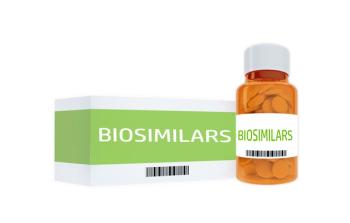The Evolving Landscape in Psychiatry: Challenges and Opportunities for Biopharma
Key Takeaways
- Psychiatric disorders affect over 20% of US adults, presenting complex challenges in diagnosis and treatment due to frequent comorbidities.
- Despite past challenges, recent advancements in brain biology and precision psychiatry offer new opportunities for innovative treatments.
Co-authors: Prateek Kanade, Chaitali Sodankar, Vamsi Ratnala, Shashwat Sharma, Kajal Dubey
Psychiatry is at a major transformative phase as the biopharma industry strives to tackle the complexities of different disorders, which impact more than 20% of the US adult population. The demand for newer and better treatments is consistently growing. This analysis highlights barriers in innovation, and recent developments with paradigm-shifting potential, while underscoring the significant needs that remain unaddressed in-patient care, diagnosis, and therapy options. Despite the complexity of psychiatric disorders and the notable risks in developing new drugs, there are growing opportunities for biopharma companies to achieve breakthroughs. Commitment from biopharma to improve patient care has led to the discovery and approval of new drug compounds and innovative combinations. Recent developments, such as the discovery of new chemical entities and approval of innovative combinations, reflect the persistent positive commitment of biopharma firms in improving patient care. Building on this progress, firms are now also leveraging the latest scientific advancements such as AI and ML to better understand target engagement, develop and better commercialize products that are both effective and safer for patients.
Overview of the current state of psychiatry
Mental illness or psychiatric disorders represent some of the most complex and underserved disease areas. These disorders continue to account for a substantial proportion of the global disease burden, necessitating the need for innovative therapeutic interventions and comprehensive management strategies.
Psychiatric disorders affect individuals irrespective of age, income, race or geography. In 2023 it was estimated that > 20% of the adults were impacted with at least one mental illness, which accounts for ~60 million of the total US population.
A major challenge in managing psychiatric disorders is their frequent overlap with other mental and physical conditions. For instance, major depression often co-occurs with generalized anxiety disorder, and PTSD commonly leads to both depression and anxiety. Additionally, mental health conditions such as depression and bipolar disorder are linked to a higher risk of chronic physical illnesses. Likewise, psychiatric symptoms can arise after conditions like diabetes, heart disease and fibromyalgia. These complex, two-way relationships make diagnosis and treatment more difficult, as symptoms can overlap or worsen each other. As these patterns become more common, the burden of psychiatric illness is likely to grow.
Unmet needs5-7
Despite advancements in the understanding of psychiatric disorders, significant gaps remain in patient care, attributable to complex disease diagnosis, insufficient availability of efficacious and safer therapeutic options, and limited understanding of underlying disease pathophysiology. While these unmet needs present a considerable challenge, they also offer a window of opportunity for innovation and progress.
Evolution of psychiatry market7-14
Psychiatric drug development has evolved over the past 30 years. Despite complex disease biology and challenges in demonstrating innovation, pharma has launched novel therapies over time. The success of Prozac (fluoxetine) garnered interest in investments from major biopharma. This period also witnessed the launch of products like Zoloft (sertraline) and Paxil (paroxetine). The early 2000s marked another milestone with the launch of a new generation of antipsychotics that significantly changed the treatment paradigm of psychiatric disorders.
Early 2000s: Several successful branded products lost exclusivity in the late 2000s and 2010s. This shift coincided with the emergence of monoclonal antibodies and an increasing focus on oncology indications. This development dramatically reshaped the strategic focus of major pharmaceutical companies, and they redirected their focus and resources toward the R&D for other therapeutic indications. This shift showed a broader industry trend, where the challenges associated with high failure rates, complex disease mechanisms and the difficulties of navigating the central nervous system led many manufacturers to realign their resources to other therapeutic areas with significant unmet needs, which were deemed as comparatively less risky or more profitable and viewed as having significant growth potential.
What has changed now: However, the current stage of psychiatry drug research is witnessing another inflection point, due to advancements in understanding of brain biology, clinical innovations and personalized treatment strategies. The approval of Cobenfy (xanomeline and trospium chloride) for schizophrenia marked a significant milestone, as it became the first new pharmacological approach for treating schizophrenia in decades. Additionally, recent acquisitions and partnerships across the biopharma industry reflect a growing interest in advancing therapeutic options for psychiatric disorders.
Precision psychiatry is gaining traction aiming at targeted treatment approaches. Companies are exploring innovative approaches such as blood-based biomarkers and vocal intonations that could serve as speech biomarkers, for treating depression, EEG-driven patient stratification and cognitive assessments to identify distinct patient subgroups. This is crucial, as many patients still face challenges like relapses, side effects and limited long-term improvement with existing treatments. In consideration of the less favorable outcomes with a one-size-fits-all approach, companies are actively working to segment the broader patient populations into more specific subsets of patients, such as major depressive disorder (MDD) patients with insomnia, MDD patients with anhedonia and suicidal ideation, and suicidal treatment-resistant bipolar depression.
For biopharma companies, navigating this evolving landscape presents substantial opportunities to differentiate themselves in a complex therapeutic area. By keeping pace with these changes, biopharma can position itself at the forefront of innovation, ultimately improving patient outcomes and driving growth; however, they also must overcome some major challenges that still hinder novel drug development. Biopharma companies also require a robust go-to-market strategy to maximize their returns on R&D investments, especially considering higher failure rates due to the factors highlighted in the following section.
Barriers to innovation6, 15-16
Despite the increasing awareness regarding psychiatric disorders and a growing demand for new and effective treatments, the psychiatry landscape has seen limited breakthroughs in recent decades.
Factors listed above make psychiatric research resource intensive. To address these, innovative trials, such as those employing new biomarkers and non-conventional study designs such as sequential parallel comparison design are being explored. These approaches aim to reduce the placebo effect and inherent subjectivity in responses. These unwarranted barriers often necessitate the enrollment of a large patient population for a long period of time, which collectively exacerbates resource issues.
Understanding the challenges in psychiatric drug development is crucial for all stakeholders to navigate this complex field and enhance patient health outcomes. By acknowledging the intricacies of psychiatric disorders, improving diagnostic accuracy and investing in precision psychiatry, biopharma can effectively address these challenges.
Emerging assets8-10, 14-20
Due to advancements in understanding of the brain biology, psychiatric research landscape has been undergoing a transformation, which has also been driven by the limitations of current therapies and growing demand for more efficacious and safer drugs. Biopharma companies have been expanding their horizons by exploring an array of drug targets with the potential to enhance patient care.
Researchers are expanding their focus beyond the identification of novel targets. They are exploring new mechanisms of action (MOAs), developing new chemical entities (NCEs) and evaluating novel drug combinations. Additionally, there have been efforts to find safer alternatives to current therapies, aimed at addressing the multifaceted challenges of psychiatric disorders. Amid all, a few companies are also aiming to minimize the subjectivity in response to psychiatric drugs by utilizing genetic as well as digital biomarkers.
Despite multiple challenges, there are increasing indicators suggesting that the clinical development landscape in psychiatry will become more comparable to programs in other therapeutic areas. This is primarily due to advancements in understanding of the challenges associated with psychiatric diseases coupled with strategic innovations in this area.
How EY can help
Strategic asset screening and prioritization for enhanced success
In the psychiatry space, where failure rates are high and a one-size-fits-all approach seems to be less effective, pharma companies should strategically prioritize assets that demonstrate the potential to create value. This includes assessing clinical efficacy, the size of the target patient segment, differentiation from standard of care and emerging competitors, and the intensity of market competition. Emphasizing parameters that are significant in the real-world setting is essential for establishing alignment with actual patient needs, profiles and outcomes. EY teams have helped biopharma clients in screening assets and developing robust clinical trial evidence generation activities with relevant trial endpoints and representative trial population that reflect real-world scenarios. This comprehensive approach ensures that biopharma companies are well positioned to make informed decisions and achieve successful market entry.
Navigating a competitive environment and ensuring successful launch
Beyond obtaining regulatory approvals, EY have partnered with various manufacturers to help them understand market trends, regional opportunities, prescriber perceptions and emerging competitors. This has proved crucial to refine strategies in response to evolving industry standards and emerging threats. Insights into the competitive landscape and regulatory environments have helped clients navigate the complexities of market entry, facilitating a successful launch and sustained presence in the psychiatry sector.
Ensuring sustainable market success
As the psychiatry space gains traction, companies need to ensure successful launch and implement strategies that deliver long-term value. Poorly crafted value stories can negatively impact market access. The extensive experience of EY can help companies navigate pricing challenges and complex insurance pathways and design well-researched, engaging messaging strategies and support programs to enhance market access.
The views reflected in this article are the views of the author and do not necessarily reflect the views of Ernst & Young LLP or other members of the global EY organization.
References
- Reinert, M., Fritze, D. and Nguyen, T., “The State of Mental Health in America 2024,” Mental Health America, July 2024
- “Mental Health Statistics [2024].”, University of St. Augustine for Health Sciences, 03 January 2024
- “How Many Us Adults? | Essential Insights.” WellWisp, accessed on 21 August 2025
- McGrath, J. J. and Lim, C. C. W., et. al., “Comorbidity within mental disorders: a comprehensive analysis based on 145,990 survey respondents from 27 countries,” Epidemiology and Psychiatric Science, 12 August 2020
- Doane, Michael and Raymond, Kimberly, et. al., “Unmet needs with antipsychotic treatment in schizophrenia and bipolar I disorder: patient perspectives from qualitative focus groups,” BMS Psychiatry, 12 April 2023
- Modi, Hemangi, Orgera, Kendal, et. al., “Exploring Barriers to Mental Health Care in the US,” Association of American Medical Colleges, 10 October 2022
- Bell, Jacob, “Big Pharma backed away from brain drugs. Is a return in sight?” Biopharma Dive, 29 January 2020
- Singh, Manpreet, and Thase, Michael, “Current progress in targeted pharmacotherapy to treat symptoms of major depressive disorder: moving from broad-spectrum treatments to precision psychiatry,” CNS Spectrums, 7 February 2025
- IsHak, Waguih William, et al. “Overview of psychiatric medications in the pipeline in phase III trials as of June 1, 2024: a systematic review.” Innovations in clinical neuroscience, 1 September 2024
- “Reviva Announces New Vocal Biomarker Data from Phase 3 RECOVER Trial of Brilaroxazine in Schizophrenia,” Reviva, 9 September 2024
- “2024 biotech deals tracker: the latest partnerships and M&A activities,” Labiotech, site accessed 18 August 2025
- Paul, Steven and Potter, William, “Finding new and better treatments for psychiatric disorders, Neuropsychopharmacology, 15 August 2023
- ZBell, Jacob, “Psychiatry drugs finally have pharma’s attention. Can they keep it?” Biopharma Dive, 4 April 2024
- Jagtiani, Amit, “Novel treatments of depression: bridging the gap in current therapeutic approaches,” Exploration of Neuroscience, 9 July 2024
- King, Maebdh and Del Greco, Christina, et. al., “Precision medicine and schizophrenia: pitfalls, promises, and policy implications,” MIT Science Policy Review, 27 August 2024
- Abernathk, Kelly and Raskin, Joel, “Top 4 Trends For Neuropsychiatric Disease Research In 2025,” Clinical Leader,3 December 2024
- Maragkou, Irena, “Investment surges, hurdles and emerging innovations in neuroscience,” Pharmaceutical Technology, 11 November 2024
- “Alto Investor Day” presentation deck, Alto Neuroscience, 9 September 2024
- “Redefining Neuroscience Drug Development” presentation deck, Neumora, May 2025
Newsletter
Lead with insight with the Pharmaceutical Executive newsletter, featuring strategic analysis, leadership trends, and market intelligence for biopharma decision-makers.





